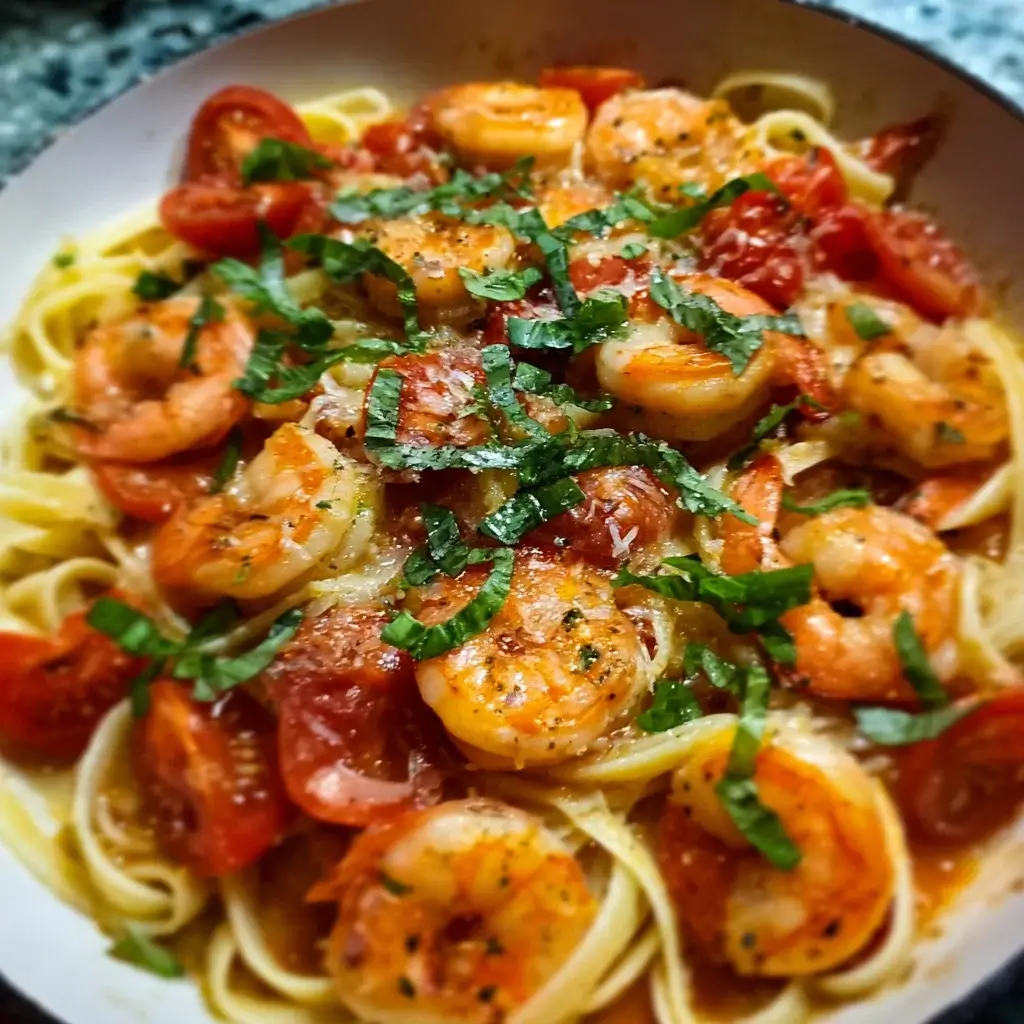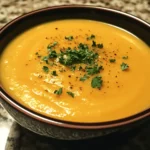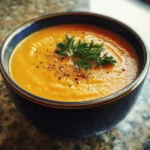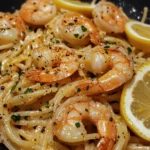There are some meals that feel like a mini-vacation, and this Shrimp Tomato Basil Pasta is one of them. It’s the dish I turn to when I want to transport my kitchen to a sun-drenched Italian coast, even on a dreary Tuesday evening. I still remember the first time I perfected this recipe. I had a pint of sweet cherry tomatoes on the counter, a pot of basil thriving on the windowsill, and a bag of shrimp in the freezer. It felt like the ingredients were calling to me. As I sautéed the garlic and shallots, the most incredible aroma filled the air—that intoxicating scent that promises something truly delicious is on its way. Then came the magic moment when the cherry tomatoes began to burst in the hot pan, collapsing into a rustic, chunky sauce that was both fresh and deeply flavorful. My family, drawn in by the smells, gathered in the kitchen. When I finally tossed the perfectly cooked pasta and pink, succulent shrimp into the pan, finishing it with a flurry of fresh basil, everyone’s eyes lit up. We ate it straight from a large family-style bowl, and the silence was only broken by murmurs of appreciation. It was fresh, light yet satisfying, and felt incredibly special for a meal that took less than 30 minutes to make. This recipe isn’t just about feeding my family; it’s about creating a moment of simple, rustic elegance that makes any day feel a little brighter.
Complete Ingredients for Shrimp Tomato Basil Pasta
The beauty of this classic Italian-inspired dish lies in its simplicity and reliance on fresh, high-quality ingredients. Each component plays a vital role in creating a harmonious balance of flavors and textures. Gather these ingredients before you begin for a smooth and enjoyable cooking experience.
For the Pasta and Shrimp:
- Pasta: 1 pound (454g) of long pasta like spaghetti, linguine, or fettuccine. Angel hair or a short pasta like penne also works well. Use a quality gluten-free pasta for a gluten-free version.
- Large Shrimp: 1 pound (454g), peeled and deveined. Fresh or frozen (and thawed) works.
- Extra Virgin Olive Oil: 3 tablespoons.
- Unsalted Butter: 2 tablespoons, cut into small pieces.
For the Fresh Tomato Basil Sauce:
- Cherry or Grape Tomatoes: 2 pints (about 4 cups), halved.
- Garlic: 5-6 cloves, thinly sliced.
- Shallot: 1 large, finely chopped.
- Dry White Wine: ¼ cup, such as Sauvignon Blanc or Pinot Grigio (or substitute with chicken broth).
- Fresh Basil: 1 cup, loosely packed, plus more for garnish.
- Red Pepper Flakes: ¼ to ½ teaspoon, depending on your spice preference.
- Fine Sea Salt: 1 ½ teaspoons, divided, plus more for pasta water.
- Freshly Ground Black Pepper: ½ teaspoon.
- Reserved Pasta Water: 1 cup.
For Garnish (Optional):
- Grated Parmesan Cheese: For serving.
- Lemon Zest: From one lemon.
A Deeper Dive into the Ingredients
Understanding the purpose of each ingredient is the key to mastering this dish and customizing it to your liking.
- The Pasta: The choice of pasta can change the dish’s character. Long strands like linguine or fettuccine are fantastic for swirling into the light sauce, ensuring every bite is coated. For a gluten-free meal, a high-quality brown rice or corn-based gluten-free pasta is essential. Remember that gluten-free pasta can sometimes be stickier, so be generous with the salting of your water and rinse it briefly with cool water after draining if you’re not adding it to the sauce immediately.
- The Shrimp: Use large shrimp (size 21/25 or 26/30) for the best results. They are meaty and satisfying and less likely to overcook than smaller shrimp. Whether you buy fresh or frozen, look for shrimp that are peeled and deveined to save significant prep time. If using frozen, thaw them properly by placing them in a colander under cold running water or letting them sit in a bowl of cold water for about 15-20 minutes. Pat them completely dry with paper towels before cooking to ensure they sear rather than steam.
- The Tomatoes: Cherry or grape tomatoes are non-negotiable for this recipe. Their high sugar content and thin skins allow them to burst when heated, creating a sweet, flavorful, and rustic sauce naturally. Halving them helps this process along. You could use diced Roma tomatoes, but you won’t get the same “burst” effect.
- The Aromatics (Garlic and Shallot): Sliced garlic offers a mellower, nuttier flavor than minced garlic, and the slices toast beautifully in the oil. A shallot provides a delicate, sweet onion flavor that complements the garlic without overpowering the dish. If you don’t have a shallot, a small yellow onion can be substituted.
- The White Wine: A splash of dry white wine serves a critical purpose: deglazing. When you add it to the hot pan after cooking the aromatics, it helps lift all the flavorful browned bits (the “fond”) from the bottom of the pan, incorporating them into the sauce for incredible depth of flavor. If you prefer not to use alcohol, you can use chicken or vegetable broth with a small squeeze of lemon juice to mimic the acidity.
- The Herbs (Basil and Red Pepper Flakes): Fresh basil is essential. Its sweet, peppery flavor is the soul of this dish. It’s added at the very end, off the heat, to preserve its delicate oils and vibrant green color. Dried basil will not provide the same fresh, bright taste. The red pepper flakes add a gentle background warmth that cuts through the richness of the butter and oil, balancing the dish perfectly.
- The Fats (Olive Oil and Butter): Using a combination of extra virgin olive oil and butter is a classic Italian technique. The olive oil has a higher smoke point and is used for sautéing, while the butter is swirled in at the end for its rich flavor, creamy texture, and ability to help emulsify the sauce.
Step-by-Step Instructions for Perfect Shrimp Pasta
This recipe comes together very quickly, so it’s important to have all your ingredients prepped and ready to go before you start cooking. This French culinary principle, mise en place (everything in its place), is the secret to a stress-free cooking process.
Step 1: Prepare the Ingredients (Mise en Place)
Bring a large pot of water to a boil. While it’s heating, do your prep work. Halve the cherry tomatoes. Thinly slice the garlic and finely chop the shallot. Roughly chop the fresh basil, reserving some small leaves for garnish. Pat the thawed shrimp completely dry with paper towels and season them with ½ teaspoon of salt and the black pepper. Have all your other ingredients measured and within reach.
Step 2: Cook the Pasta
Once the pot of water is at a rolling boil, add a generous amount of salt (it should taste like the sea). Add the pasta and cook according to package directions until it is al dente (cooked through but still with a firm bite). Just before you drain the pasta, carefully scoop out and reserve at least 1 ½ cups of the starchy pasta water. This water is liquid gold and the key to a silky sauce. Drain the pasta.
Step 3: Sauté the Aromatics
While the pasta is cooking, begin your sauce. Heat the 3 tablespoons of olive oil in a large skillet or Dutch oven over medium heat. Add the sliced garlic, chopped shallot, and red pepper flakes. Cook, stirring frequently, for about 2-3 minutes, until the shallots have softened and the garlic is fragrant and lightly golden. Be very careful not to burn the garlic, or it will become bitter.
Step 4: Create the Tomato Sauce
Add the halved cherry tomatoes and the remaining 1 teaspoon of salt to the skillet. Stir to coat, then increase the heat to medium-high. Cook, stirring occasionally, for 6-8 minutes. The tomatoes will begin to soften and then burst, releasing their juices and creating a chunky, rustic sauce. You can gently press down on some of them with the back of a spoon to help them along.
Step 5: Deglaze the Pan
Pour the ¼ cup of dry white wine (or broth) into the pan. As it sizzles, use your wooden spoon to scrape up any flavorful browned bits stuck to the bottom of the skillet. Let the wine simmer and reduce by about half, which should take about 1-2 minutes.
Step 6: Cook the Shrimp to Perfection
Add the seasoned shrimp to the skillet in a single layer. Cook for 1-2 minutes per side, just until they are pink and opaque. The key to tender shrimp is to not overcook them. They cook very quickly. As soon as they curl into a “C” shape, they are cooked. If they curl into a tight “O,” they are overcooked and will be rubbery.
Step 7: Bring It All Together
Turn the heat down to low. Add the drained pasta directly to the skillet with the shrimp and sauce. Pour in about ½ cup of the reserved starchy pasta water. Toss everything together vigorously for about a minute. The starchy water will combine with the tomato juices and fats to create a light, glossy sauce that clings to the pasta. If the sauce seems too thick, add another splash of pasta water until it reaches your desired consistency.
Step 8: Finish with Butter and Basil
Remove the skillet from the heat. Add the 2 tablespoons of cubed butter and the chopped fresh basil. Stir gently until the butter has melted and is incorporated into the sauce. This final step adds a beautiful richness and sheen.
Step 9: Serve Immediately
Divide the Shrimp Tomato Basil Pasta among warm bowls. Garnish with additional fresh basil, a generous grating of Parmesan cheese, and a sprinkle of lemon zest, if desired. Serve immediately and enjoy.
Nutrition Facts
The following nutritional information is an approximation based on the ingredients listed. Actual values can vary based on specific product choices and exact portion sizes.
- Servings: This recipe makes 4 generous main course servings.
- Serving Size: Approximately 2 cups.
- Calories Per Serving: Approximately 550-650 calories.
This dish offers a well-rounded nutritional profile. It provides lean protein from the shrimp, complex carbohydrates for energy from the pasta, and vitamins and antioxidants (like lycopene) from the tomatoes and garlic. Using extra virgin olive oil contributes healthy monounsaturated fats. It’s a wholesome, satisfying meal that is far healthier than heavy, cream-based pasta dishes.
Preparation Time
This is a fantastic recipe for a busy weeknight as it comes together in under 30 minutes, provided you are efficient with your prep.
- Preparation Time (Mise en Place): 10-15 minutes.
- Cook Time: 15-20 minutes.
- Total Time: Approximately 30 minutes.
The key to achieving this quick time is to start the sauce while the pasta water is boiling and cooking.
How to Serve Your Shrimp Tomato Basil Pasta
This dish is a star on its own, but serving it with the right accompaniments and a thoughtful presentation can turn a simple dinner into a memorable meal.
- The Perfect Garnishes:
- Parmesan Cheese: A sprinkle of freshly grated Parmigiano-Reggiano adds a salty, nutty, umami depth that is irresistible.
- Fresh Herbs: A few extra torn basil leaves or finely chopped fresh parsley adds a pop of color and freshness.
- Lemon Zest: A final grating of lemon zest over the top before serving brightens all the flavors and adds a beautiful, fresh aroma.
- Essential Side Dishes:
- Crusty Bread: Serve with warm, crusty garlic bread or a simple baguette to sop up every last bit of the delicious tomato basil sauce. A gluten-free baguette is a great option as well.
- Simple Green Salad: A lightly dressed salad of arugula or mixed greens with a simple vinaigrette provides a fresh, crisp contrast to the warm pasta.
- Wine Pairing Suggestions:
- Sauvignon Blanc: The wine used in the recipe is often the best pairing. Its crisp acidity and citrus notes will cut through the richness and complement the shrimp and tomato beautifully.
- Pinot Grigio: Another excellent choice, this light-bodied white wine is crisp and clean, and won’t overpower the delicate flavors of the dish.
- Dry Rosé: A dry rosé from Provence offers the light body of a white wine with some of the berry notes of a red, making it a versatile and delicious partner for this pasta.
- Presentation Style:
- For a rustic, communal feel, serve the pasta family-style in a large, warmed ceramic bowl placed in the center of the table.
- For a more elegant presentation, twirl individual portions of pasta with tongs before placing them in shallow pasta bowls, arranging the shrimp artfully on top.
5 Additional Tips for Pasta Perfection
Take your Shrimp Tomato Basil Pasta from great to absolutely exceptional with these five professional tips.
1. The Power of Pasta Water is Real:
Never underestimate the importance of the starchy pasta cooking water. When pasta cooks, it releases starch into the water. This starchy liquid is a superior emulsifier, meaning it helps bind the fat (olive oil, butter) and the water-based components (tomato juice, wine) of the sauce together, creating a smooth, creamy, non-greasy sauce that beautifully coats every strand of pasta. Always reserve more than you think you’ll need.
2. Don’t Crowd the Pan:
This rule applies to both the aromatics and the shrimp. Use a skillet that is large enough to hold all the ingredients comfortably. When you add the shrimp, make sure they are in a single layer with some space between them. If the pan is too crowded, the ingredients will steam instead of sear, and you won’t develop the deep, roasted flavors that make this dish so special. If your pan isn’t big enough, it’s better to cook the shrimp in two separate batches.
3. The “No-Cook” Sauce Variation for Peak Summer:
If you have exceptionally sweet, ripe summer tomatoes, you can try a no-cook version of the sauce. While the pasta cooks, combine the halved tomatoes, sliced garlic, olive oil, salt, and red pepper flakes in a large bowl. Let it marinate at room temperature. Once the pasta is cooked, drain it and add it directly to the bowl with the tomato mixture. The heat from the pasta will gently warm the tomatoes and wilt the garlic just enough to release their flavors. Sauté the shrimp separately and add them to the bowl, then finish with basil and butter as directed.
4. Protein Swaps and Vegetarian Options:
This sauce is incredibly versatile. If you’re not a fan of shrimp or don’t have any on hand, you can easily substitute it with other proteins.
* Scallops: Sear large sea scallops for 1-2 minutes per side and add them at the end.
* Chicken: Use 1 pound of boneless, skinless chicken breast, cut into bite-sized pieces. Sauté the chicken until cooked through before you add the tomatoes.
* Vegetarian: For a hearty vegetarian version, omit the shrimp and add a can of drained and rinsed cannellini beans or chickpeas along with the tomatoes.
5. Control Your Sauce Texture:
You are the master of your sauce. If you prefer a saucier pasta, you can add an extra half-pint of tomatoes. If you like a thicker sauce, let the tomatoes cook down for a few extra minutes before adding the shrimp. You can also “blister” some of the tomatoes by adding them to the hot oil for a minute before adding the garlic, which creates a smokier, more intense flavor profile.
Frequently Asked Questions (FAQ)
Here are answers to some of the most common questions about making this Shrimp Tomato Basil Pasta.
1. Can I use frozen shrimp? Do I need to thaw it first?
Yes, frozen shrimp works wonderfully in this recipe and is often more affordable and just as high-quality as what’s available at the fresh seafood counter. However, you absolutely must thaw it completely before cooking. Cooking shrimp from frozen will result in uneven cooking and will release a lot of water into your sauce, making it soupy. The best way to thaw shrimp is to place them in a colander in the sink and run cold water over them for 5-10 minutes until they are pliable. Pat them thoroughly dry before seasoning and cooking.
2. Can I use canned tomatoes instead of fresh cherry tomatoes?
While fresh cherry or grape tomatoes are highly recommended for the fresh, bright flavor and rustic texture they provide, you can use canned tomatoes in a pinch. The best substitute would be a 28-ounce can of whole peeled San Marzano tomatoes. Drain them, then crush them with your hands into a bowl to create a chunky texture. The flavor profile will be different—deeper and more cooked-tasting rather than fresh and zesty—but it will still be delicious.
3. My shrimp always comes out tough and rubbery. What am I doing wrong?
The number one cause of tough shrimp is overcooking. Shrimp cook incredibly fast, often in just 3-4 minutes total. Pay close attention to the visual cues: they will turn from translucent gray to opaque pink, and they will curl from a straight shape into a “C” shape. The moment they form that gentle “C,” they are done. Remove them from the heat immediately. Remember that they will continue to cook slightly from the residual heat in the pan and sauce.
4. How should I store and reheat leftovers?
Seafood pasta is always best eaten fresh, as reheated shrimp can easily become rubbery. However, if you have leftovers, store them in an airtight container in the refrigerator for up to 2 days. To reheat, it’s best to avoid the microwave. Instead, add the pasta to a skillet over low heat with a splash of water or chicken broth. Gently toss until it is warmed through. This method is much gentler on the shrimp’s texture.
5. My sauce seems watery and doesn’t cling to the pasta. How can I fix this?
This is a common pasta problem that is easily solved with pasta water! A watery sauce usually means you didn’t add enough of the starchy pasta water, or you didn’t toss the pasta in the sauce long enough for it to emulsify. Add another ¼ cup of your reserved hot pasta water to the skillet and toss the pasta vigorously over low heat. The starch will activate and help the sauce thicken and cling beautifully to every noodle. Finishing with the cold butter off the heat also helps create a creamier, more cohesive sauce.

Shrimp Tomato Basil Pasta recipe
Ingredients
For the Pasta and Shrimp:
-
Pasta: 1 pound (454g) of long pasta like spaghetti, linguine, or fettuccine. Angel hair or a short pasta like penne also works well. Use a quality gluten-free pasta for a gluten-free version.
-
Large Shrimp: 1 pound (454g), peeled and deveined. Fresh or frozen (and thawed) works.
-
Extra Virgin Olive Oil: 3 tablespoons.
-
Unsalted Butter: 2 tablespoons, cut into small pieces.
For the Fresh Tomato Basil Sauce:
-
Cherry or Grape Tomatoes: 2 pints (about 4 cups), halved.
-
Garlic: 5-6 cloves, thinly sliced.
-
Shallot: 1 large, finely chopped.
-
Dry White Wine: ¼ cup, such as Sauvignon Blanc or Pinot Grigio (or substitute with chicken broth).
-
Fresh Basil: 1 cup, loosely packed, plus more for garnish.
-
Red Pepper Flakes: ¼ to ½ teaspoon, depending on your spice preference.
-
Fine Sea Salt: 1 ½ teaspoons, divided, plus more for pasta water.
-
Freshly Ground Black Pepper: ½ teaspoon.
-
Reserved Pasta Water: 1 cup.
For Garnish (Optional):
-
Grated Parmesan Cheese: For serving.
-
Lemon Zest: From one lemon.
Instructions
Step 1: Prepare the Ingredients (Mise en Place)
Bring a large pot of water to a boil. While it’s heating, do your prep work. Halve the cherry tomatoes. Thinly slice the garlic and finely chop the shallot. Roughly chop the fresh basil, reserving some small leaves for garnish. Pat the thawed shrimp completely dry with paper towels and season them with ½ teaspoon of salt and the black pepper. Have all your other ingredients measured and within reach.
Step 2: Cook the Pasta
Once the pot of water is at a rolling boil, add a generous amount of salt (it should taste like the sea). Add the pasta and cook according to package directions until it is al dente (cooked through but still with a firm bite). Just before you drain the pasta, carefully scoop out and reserve at least 1 ½ cups of the starchy pasta water. This water is liquid gold and the key to a silky sauce. Drain the pasta.
Step 3: Sauté the Aromatics
While the pasta is cooking, begin your sauce. Heat the 3 tablespoons of olive oil in a large skillet or Dutch oven over medium heat. Add the sliced garlic, chopped shallot, and red pepper flakes. Cook, stirring frequently, for about 2-3 minutes, until the shallots have softened and the garlic is fragrant and lightly golden. Be very careful not to burn the garlic, or it will become bitter.
Step 4: Create the Tomato Sauce
Add the halved cherry tomatoes and the remaining 1 teaspoon of salt to the skillet. Stir to coat, then increase the heat to medium-high. Cook, stirring occasionally, for 6-8 minutes. The tomatoes will begin to soften and then burst, releasing their juices and creating a chunky, rustic sauce. You can gently press down on some of them with the back of a spoon to help them along.
Step 5: Deglaze the Pan
Pour the ¼ cup of dry white wine (or broth) into the pan. As it sizzles, use your wooden spoon to scrape up any flavorful browned bits stuck to the bottom of the skillet. Let the wine simmer and reduce by about half, which should take about 1-2 minutes.
Step 6: Cook the Shrimp to Perfection
Add the seasoned shrimp to the skillet in a single layer. Cook for 1-2 minutes per side, just until they are pink and opaque. The key to tender shrimp is to not overcook them. They cook very quickly. As soon as they curl into a “C” shape, they are cooked. If they curl into a tight “O,” they are overcooked and will be rubbery.
Step 7: Bring It All Together
Turn the heat down to low. Add the drained pasta directly to the skillet with the shrimp and sauce. Pour in about ½ cup of the reserved starchy pasta water. Toss everything together vigorously for about a minute. The starchy water will combine with the tomato juices and fats to create a light, glossy sauce that clings to the pasta. If the sauce seems too thick, add another splash of pasta water until it reaches your desired consistency.
Step 8: Finish with Butter and Basil
Remove the skillet from the heat. Add the 2 tablespoons of cubed butter and the chopped fresh basil. Stir gently until the butter has melted and is incorporated into the sauce. This final step adds a beautiful richness and sheen.
Step 9: Serve Immediately
Divide the Shrimp Tomato Basil Pasta among warm bowls. Garnish with additional fresh basil, a generous grating of Parmesan cheese, and a sprinkle of lemon zest, if desired. Serve immediately and enjoy.
Nutrition
- Serving Size: one normal portion
- Calories: 550-650





